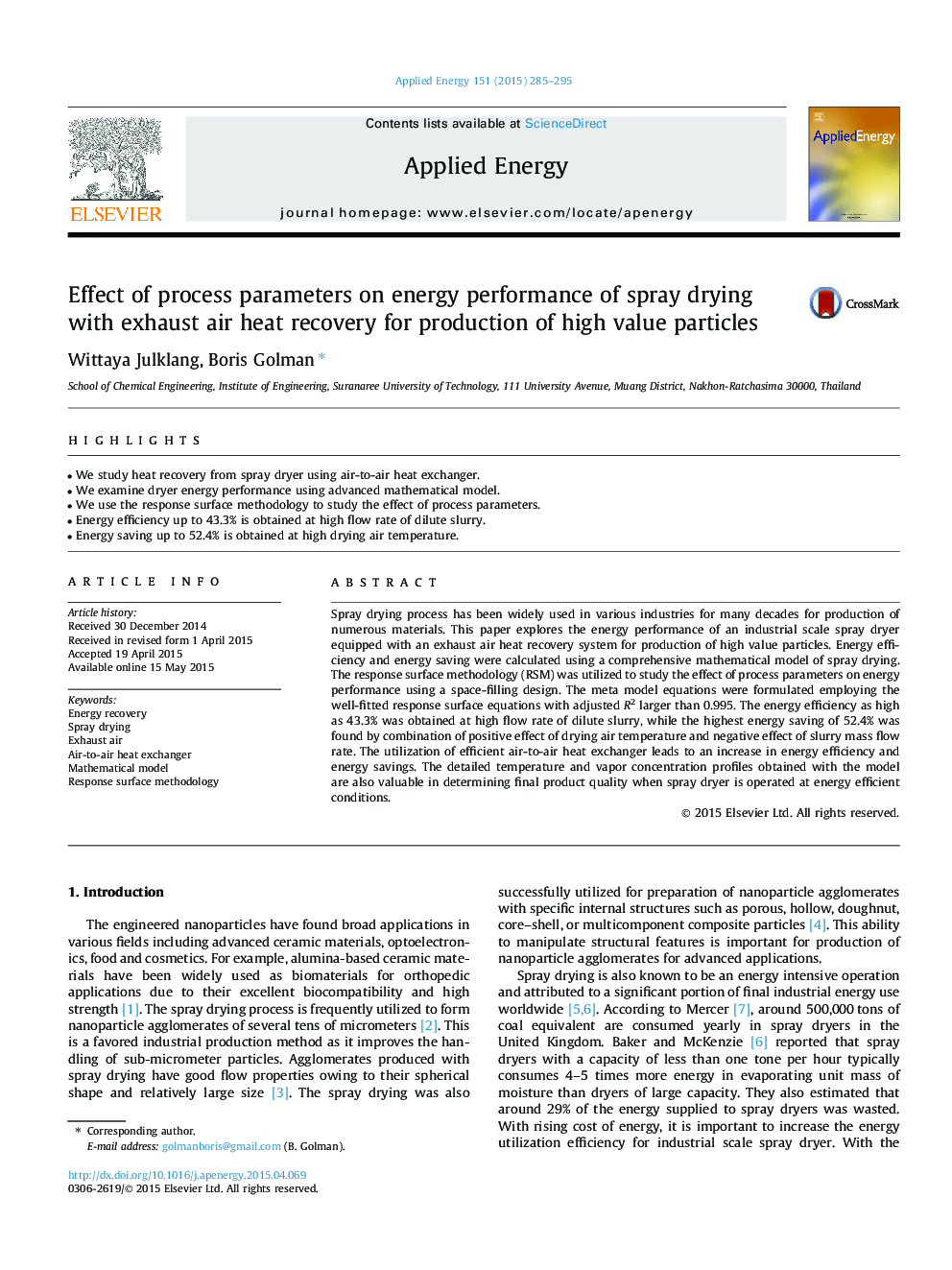| Article ID | Journal | Published Year | Pages | File Type |
|---|---|---|---|---|
| 242475 | Applied Energy | 2015 | 11 Pages |
•We study heat recovery from spray dryer using air-to-air heat exchanger.•We examine dryer energy performance using advanced mathematical model.•We use the response surface methodology to study the effect of process parameters.•Energy efficiency up to 43.3% is obtained at high flow rate of dilute slurry.•Energy saving up to 52.4% is obtained at high drying air temperature.
Spray drying process has been widely used in various industries for many decades for production of numerous materials. This paper explores the energy performance of an industrial scale spray dryer equipped with an exhaust air heat recovery system for production of high value particles. Energy efficiency and energy saving were calculated using a comprehensive mathematical model of spray drying. The response surface methodology (RSM) was utilized to study the effect of process parameters on energy performance using a space-filling design. The meta model equations were formulated employing the well-fitted response surface equations with adjusted R2 larger than 0.995. The energy efficiency as high as 43.3% was obtained at high flow rate of dilute slurry, while the highest energy saving of 52.4% was found by combination of positive effect of drying air temperature and negative effect of slurry mass flow rate. The utilization of efficient air-to-air heat exchanger leads to an increase in energy efficiency and energy savings. The detailed temperature and vapor concentration profiles obtained with the model are also valuable in determining final product quality when spray dryer is operated at energy efficient conditions.
